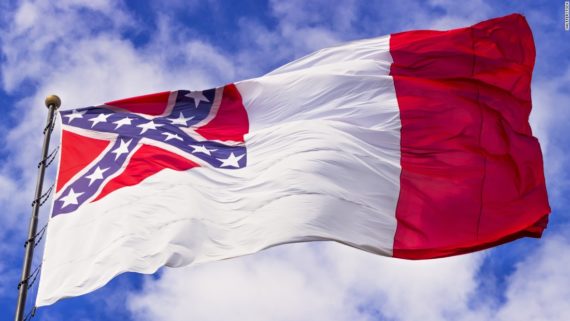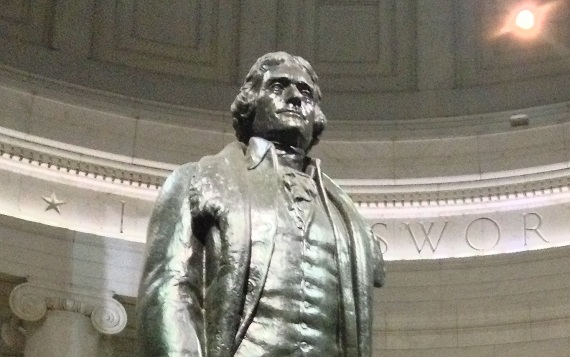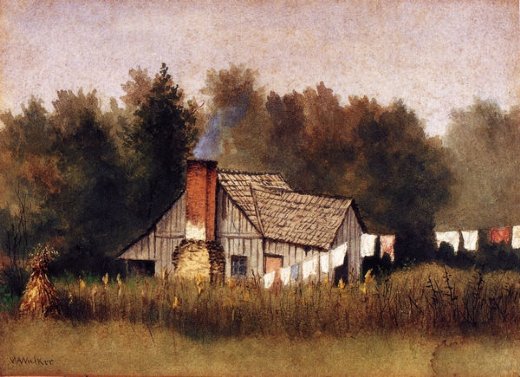
From the 1870s to the late 1950s, there was an unofficial truce between the North and South. Each side recognized and saluted the courage of the other; it was conceded that the North fought to preserve the Union and because Old Glory had been fired on, and the Southerner fought for liberty and to defend his home; the two great heroes of the war were Abraham Lincoln and Robert E. Lee; and the South admitted that slavery was wrong but never conceded that it was cruel.
Around 1960, the Democratic Party—led by Lyndon B. Johnson—advanced the modern incarnation of identity politics. It worked very well for them. In the election of 1956, 75% of African-Americans voted Republican. By 1964, more than 90% of them voted Democrat, and they have been doing so until 2020. As part of their effort to control and manipulate the black vote, the Leftists and their myrmidons advanced the myth that the Civil War was all about slavery. It wasn’t. It was, in my opinion, about money, more than anything else. Now, at this point, I know some of my liberal friends will bristle up and say: “It was too all about slavery!” Well, you are entitled to your opinion, but let me ask you this: What was slavery about?
ANSWER: It was about money.
The “it was all about slavery” argument is an oversimplified and infantile claim that has duped many people. Those who subscribe to this flawed theory ignore one undeniable fact: history is messy. It is almost never as simple as the modern Left would have you believe. Oh, sure, slavery was an issue, but it was certainly not the only issue and not even the dominant one. Listed below are eleven others:
1. The Question of What Kind of Government Would We Have? Would we follow the Alexander Hamilton’s big government/commercial state model, featuring a strong, centralized government, a chief executive with almost royal powers, a Senate elected for life, high tariffs to encourage manufacturing at the expense of agriculture, a strong National Bank to control the currency, and high public land prices to generate income for Washington, D.C., to finance internal improvements (especially canals and roads in the North), selling public lands at high prices would also have the advantage of keeping the new waves of immigrants from Europe in the cities. Because they could not afford to buy land and therefore could not farm, they would have to remain in the cities, providing a ready pool of cheap labor for big business.
The alternative was the small government, “governs best which governs least” philosophy of Thomas Jefferson. This viewpoint was adopted by his intellectual heirs, John C. Calhoun and Jefferson Davis, among others. The Hamiltonian model was adopted by Henry Clay and Abraham Lincoln, who embraced Clay’s “America System” ideas as his political North Star.
One never hears about this nowadays because it is largely a dead issue. It was settled at Appomattox. Big government won. And it is still winning. This is why one can say that, when it comes to the Civil War, in a sense, both sides lost.
2. Northern corporate greed. Northern corporations liked high tariffs (taxes) on goods the South imported, because it reduced competition with European manufacturers and allowed them to charge higher prices for often substandard goods. The tax revenue went to Washington, which used it to subsidize Northern industries (both directly and indirectly) at the expense of Southern agriculture. Cotton was especially lucrative. In 1859, the value of exported cotton totaled $161,000,000. The value of all Northern exports combined was just over $70,000,000. By 1860, the Federal budget was $80,000,000. Seventy million of that was paid by the South. One section, which amounted to 29% of the population, was paying more than 82% of the taxes. Of that, four out of five dollars was being used for internal improvements in the North. This was not good enough for Abraham Lincoln. He backed an increase in the tariff from 24% to 47% (and 51% on items containing iron). He got his way. This tariff rate was in effect until 1913.
3. Northern hypocrisy. The North also had slaves. It is an actual fact that Massachusetts had slavery 78 years longer than Mississippi. They freed their slaves by a process called manumission, which was designed so that the Northern master didn’t lose any money. Wall Street continued to finance Southern plantations, and thus slavery, until the Civil War. The Northern bankers wanted slaves as collateral and preferred them to land. Very often, “Massa” used the money he borrowed from Northern banks to purchase more slaves. The Northern bankers thus financed slavery.
Also, it did not escape the attention of the Southern editors that the slave fleets did not headquarter in Southern ports. They operated out of Boston, Massachusetts, and Providence, Rhode Island, joined later by New York City. The Lincoln regime did nothing to restrict these Northern shipping interests. Nor did this stop with the war. It continued until 1885, 20 years after Lee surrendered, when Brazil became the last nation in the New World to outlaw the international slave trade. Southern editorial writers hammered home all these points in the 1840s and 1850s, when charges of Northern hypocrisy were quite common in Southern newspapers.
4. Abolitionist terrorism. The greatest fear most Southerners had before 1861 was the slave revolt along the lines of that experienced by Haiti in 1791. Many abolitionists called for them, and some of them financially supported John Brown’s terrorist attack on Harpers Ferry in 1859. Frederick Douglass and W. E. B. DuBois called the shots fired here and the first shots of the Civil War. They were probably right.
5. Republican willingness to protect terrorists. The John Brown terrorists who escaped to the North were incarcerated. The states with Republican governors refused to extradite them and let them go. The South looked upon this as a preview of what they could expect from a Republic president. When John Brown seized Harpers Ferry, Democratic President Buchanan sent in the Marines. The Southern leaders asked if they could expect the same from a Republican president? The answer was no.
6. The Federal budget grossly favored the North (see Number 2 above).
7. Cultural differences. These are too complex to innumerate here, but they still exist. Because of television, they are less pronounced than they were in 1860, but they are still there.
8. Political power. Because of immigration, the demographics caused a power shift in favor of the North. By 1860, the South felt (with considerable justification) that it was doomed to become an economic colony of the North if it remained in the Union, so it did not.
9. Constitutional Issues. After large sections of New England threatened to secede five times between 1803 and 1860, Lincoln and his cronies suddenly decided that the 10th Amendment to the U.S. Constitution (somehow) did not apply to the South in 1861, and that the powers not delegated to the states or the people somehow did not count when it came to secession. But after the war, the Federal government refused to bring Jefferson Davis (or any other Southern leader) to trial, even though he demanded it, because as Senator Sumner (a radical Republican) wrote to Chief Justice Chase: “because by the Constitution, secession is not treason.”
10. Nineteenth-Century Fake News. In 1832, a motion to abolish slavery failed in the Virginia legislature by a vote of 58 to 65. Four years later, the legislature made it a crime even to advocate abolition. The difference? Northern abolitionist propaganda, which was often hateful, salacious, and untruthful. It made the slavery issue sectional. In the 1830s, anti-slavery societies in the South outnumbered those in the North 106 to 24. By 1850, there were no anti-slavery societies in the South—zip, zero, nada.
11.Economic Issues After Secession. The Confederacy set its tariff rates at 10%. (If it was good enough for God, it was good enough for them.) There was no way Lincoln’s 47% tariff could compete with that for foreign trade. Lincoln legitimately feared the Northern economy would crash into a recession, if not a depression, and the Federal Government would lose 82% of its tax base, so Washington would be in desperate straits. Because Northern public opinion did not support a war (many Northerners said “Good riddance!” to the South), Lincoln had to walk a political tightrope. He had to instigate a war and make it appear that the South started it by maneuvering Jefferson Davis into firing the first shot. The slick corporate lawyer was up to this as well, but that is a story for another time.
When one has written an entire book about a subject like the causes of the Civil War, it is difficult to condense it into 1,500 words or so. Suffice it to say that the onset of the Civil War was much more complex than the average American today thinks it was. For those astonished by the facts I have mentioned above, I hope you are inspired to do further reading on the subject. To paraphrase Harry Truman: the only thing new is the history you don’t know.
Originally published at LewRockwell.com






